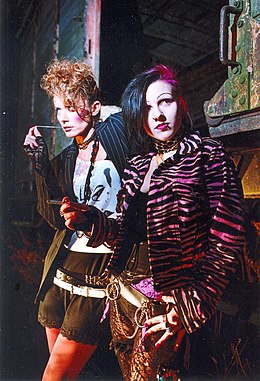
Back ثقافة سرية Arabic Underground AST Yeraltı mədəniyyət Azerbaijani Андэрграўнд Byelorussian Андэграўнд BE-X-OLD Ъндърграунд Bulgarian Underground Catalan Underground Czech Underground Danish Underground (Kultur) German

Underground culture, or simply underground, is a term to describe various alternative cultures which either consider themselves different from the mainstream of society and culture, or are considered so by others. The word "underground" is used because there is a history of resistance movements under harsh regimes where the term underground was employed to refer to the necessary secrecy of the resisters.
For example, the Underground Railroad was a network of clandestine routes by which African slaves in the 19th-century United States attempted to escape to freedom. The phrase "underground railroad" was resurrected and applied in the 1960s to the extensive network of draft counseling groups and houses used to help Vietnam War-era draft dodgers escape to Canada,[1] and was also applied in the 1970s to the clandestine movement of people and goods by the American Indian Movement in and out of occupied Native American reservation lands. (See also: Wounded Knee Occupation).[2]
The filmmaker Rosa von Praunheim documented the legendary New York underground scene in the 1970s around Andy Warhol in some of his films, for example in Underground and Emigrants (1976) and Tally Brown, New York (1979). Since then, the term has come to designate various subcultures such as mod culture, hippie culture, punk culture, techno music/rave culture, and underground hip hop.
- ^ "1960s Draft Dodger Group -- Toronto Anti-Draft Programme". www.radicalmiddle.com. Archived from the original on 2020-02-25. Retrieved 2005-12-15.
- ^ "AIM - American Indian Movement Store". www.aimovement.org. Archived from the original on 2019-12-06. Retrieved 2005-08-22.